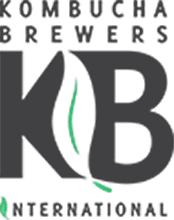Lactose fermentation by Kombucha - a process to obtain new milk-based beverages
Authors:
MIRELA ILICIC, KATARINA KANURIC, SPASENIJA MILANOVIC, EVA LONCAR, MIRJANA DJURIC, RADOMIR MALBASA
Abstract:
This paper focuses on fermentation of lactose from a model system (black tea) and from two types of milk (0.9% w/w and 2.2% w/w of fat) by application of Kombucha. Quantities of the applied Kombucha starter were 10% v/v and 15% v/v. All fermentations were performed at 42oC. The process to achieve a desirable pH=4.5 was slower in the model system (16 h) than in milk (9 - 10 h). Regarding starter quantity, 10% v/v proved optimal. Regarding types of milk, higher fat content guarantees shorter fermentation and higher yield of metabolites. Utilization of lactose was found at a level of 20% and 30% in milk with 0.9% w/w and 2.2% w/w of fat, respectively. This was correlated with an appearance of intermediates and/or products. Glucose underwent further transformations almost entirely, while galactose showed much lower reactivity. Seven to twelve times higher contents of lactic acid were found compared to acetic acid. Milk-based beverage from the reduced fat sample, inoculated with 10% v/v of Kombucha starter, has the best physical characteristics (syneresis and water holding capacity). It also developed a good texture (especially cohesiveness and index of viscosity). Milk lactose fermentation was a process that could have been used for obtaining new milk-based products.
Keywords: kombucha, lactose fermentation, new milk products
Country: Romania
Citation: Romanian Biotechnological Letters 2012 Vol.17 No.1 pp.7013-7021 ref.31
Study Mailing Address:
University of Novi Sad, Faculty of Technology, Bulevar Cara Lazara 1, 21000 Novi Sad,
Serbia
Date Updated: January 20, 2021
 0 people like this study.
0 people like this study.